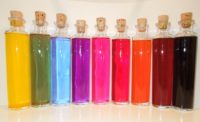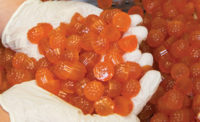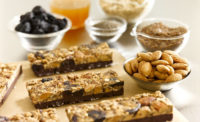Allied Market Research’s recently released global sugar confectionery market report projects sugar confectionery sales will reach $55.594 billion by 2022. The study foresees an estimated CAGR of 3.2 percent between 2016 and 2022. It’s no surprise, then, that key industry players are leaving no stone unturned in tapping the immense potential of the market.
Confectionery manufacturers have adopted competitive pricing methods and innovative marketing campaigns to capture the attention of customers. Not only have they expanded their product offerings, but also ventured into local and international markets to strengthen their presence in the global industry. Moreover, the segment of medicated confectionery has achieved greater value and is poised for significant growth.
Lucrative market growth for medicated candy
The medicated confectionery segment has become a highly commercial area of the market in recent years. The appeal for consumers lies in candy and hard-boiled sweets that are made from a thick liquid and can be consumed for added medical benefits. The market shelves are filled with a surplus of medicated confections, such as pastilles, lozenges, vitamins and hard-boiled, sweet candies.
These confections have gained substantial popularity in the last decade, owing to higher consumer preferences for medicines and supplements that are sweet and can be easily swallowed. Throat lozenges or pastilles, which have been hard-boiled and made from a thick liquid containing medicine or an “active,” address consumer desires for ease and taste.
Consumers have begun to embrace the consumption of candy that has been elevated with the inclusion of high-quality, organic products or medical substances that are intended to treat certain medical issues. For instance, Vicks lozenges licensed by Procter & Gamble to Katjes International are some of the most popular hard-boiled candies that contain menthol and other ingredients for a sore throat and cough. Other brands, such as Strepsils, Honitus and Cofsils, also have emerged in the market, making the segment especially competitive. The entire market segment is touted to grow at CAGR of 3.9 percent in the next few years, driven by several investors and new entrants who see this as a lucrative opportunity.
Organic now spells ‘innovative’
An increasing number of millennials are now health-conscious and exhibit a greater propensity toward healthier lifestyle habits. Excessive consumption of sugar and sweets has brought about increased concerns about obesity and diabetes, thus pushing consumers toward organic, sugar-free confectionery. Such products that address consumers’ sweet tooth while providing “better-for-you” positioning have found many takers. Competitors engaged in the confectionery market have realized this and are fast churning out products that are organic and glucose-free. Innovation is the keyword as the sugar confectionery companies experiment with various flavors and high-quality ingredients.
For example, several confectioners including Torie & Howard, YumEarth and Sweetie Blooms have added new products to their offerings, which include ingredients such as maple syrup, nectar, cashew flour, honey and caramel, all of which are organically sourced/created. They include products that are as unique and tasty as licorice, flavored mints, lozenges, gummy bears, nougat, marshmallows and lollipops. All these products have ushered in a new era of “healthy, organic” candies in the marketplace, capturing the fancy of ever-conscious, label-reading consumers.
Mufassira Fathinma is a content writer at Allied Analytics LLP. She holds a bachelor‘s degree in business management. She has an active interest in the happenings of various industry verticals. Mufassira reads, researches and writes actively on a diverse range of topics including current ecological trends and developments.







